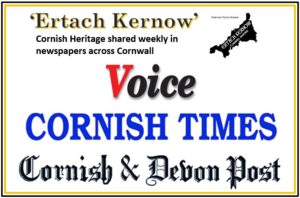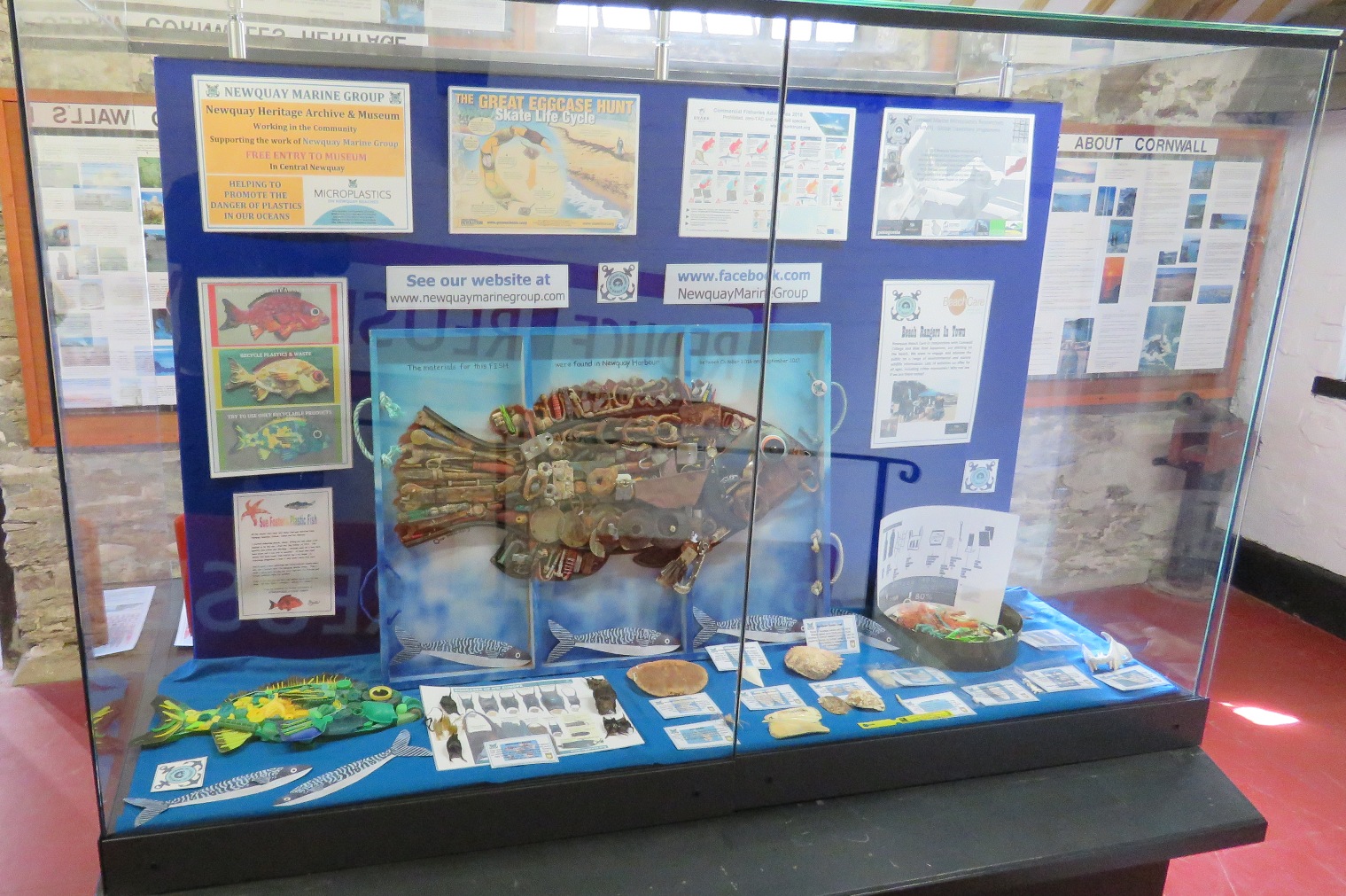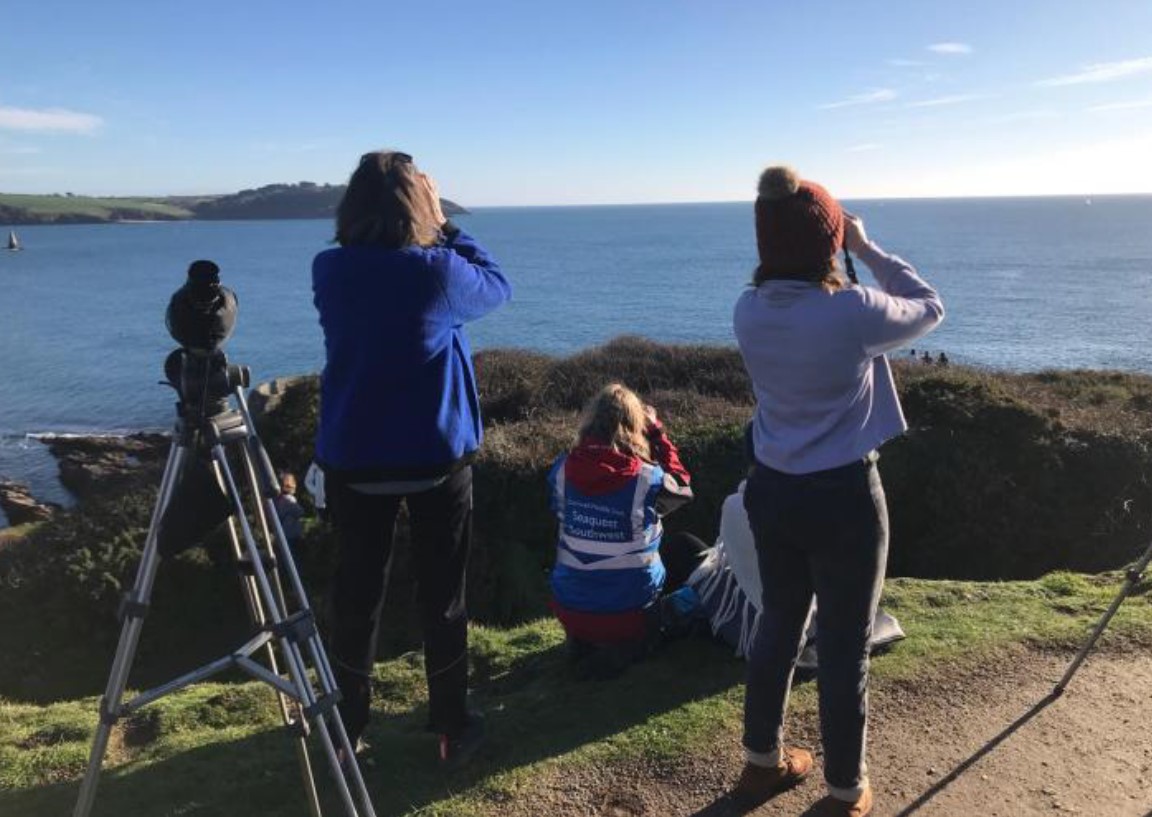Ertach Kernow - Seaquest Southwest a Cornwall Wildlife Trust project
Cornwall Wildlife Trust is known for its many projects including recent work relating to beavers. What is perhaps less well-known is its maritime interaction with other marine based organisations around the coast of Cornwall. When we talk of Cornish heritage most people think of its history, culture especially language music and dance. Our environment is also very much part of this and seen daily if travelling around Cornwall in our stone hedges. But from time immemorial Cornwall has always benefited from the sea through its long coastline with fishing, the 18th and 19th century coastal trade exporting Cornish minerals, ship and boat building, and dare it be said smuggling. Although today fishing is still an important part of Cornish life in many harbours around the coast it is now a relatively small part of Cornwall’s economy although added to farming and forestry this combined sector is still arguably the largest.
The Seaquest Southwest project run by Cornwall Wildlife Trust works in conjunction with seventeen marine based organisations and becoming increasingly important today as the effects of climate change take hold. This project has three main aims; to engage people with the marine environment, collect data on marine wildlife and to better understand and conserve marine wildlife. Sad tales of large marine mammals stranding on beaches. Why? Sightings of certain species of whales and other large sea mammals when they are seen, especially when perhaps they shouldn’t be. No doubt many folk will remember ‘Wally the Walrus’ back in 2021 who unintentionally caused mayhem sinking small boats while clambering onboard. He was eventually given his own floating couch at one harbour. Understanding all of this and more is important and collecting and collating of this information helps provide answers to questions that affect Cornwall’s marine heritage.
The Cornwall Wildlife Trust are a coordinating cog in the wheel that results in this wide ranging and necessary data being made available, largely dependent on the support of the general public submitting and sharing information. Much of this is done via these seventeen marine groups part of a network of groups known collectively as the ‘Your Shore Network Group’. These localised voluntary groups carryout a variety of activities which include basic beach clearance, survey’s collection of data and perhaps the most enjoyable aspects by working as a group sighting for sea creatures and birds.
As always click the images for larger view
Bude Marine Group working within their neighbourhood was formed in 2018 from people with a mixed bag of interests but with a mutual interest in their local coastal waters and seashore. North Cornwall has some stunning coastal scenery and the Bude group cover the coastline between Crackington Haven and Duck Pool. The local marine zone in which Bude is located stretches from Hartland Point to Tintagel.
Website link: https://www.budemarinegroup.org/
Further down the coast is a relatively new group known as the Seven Bays Marine Conservation Group who cover an area of the coast from Padstow to Park Head. This group seem to have carried out some great work over a short period of time, but things have gone quiet and my email to them was rejected by the system. If this group has fallen by the wayside hopefully someone will pick up again. They have a Facebook page showing some of their activities back in 2022.
Facebook link: https://www.facebook.com/7baysmcg/
Close by is the Polzeath Marine Conservation Group who are a proactive group with their own marine centre. They carry out many of the usual activities such as beach cleaning but also engage in many that involve educating children through rockpool rambles. This is a fun way for children to learn and appreciate the small marine creatures that inhabit the rockpools. Many of these can be seen in the small aquarium the group maintain in their marine centre. The issues relating to plastic including the small nurdles is something which is shared along with education relating to plastics generally.
Website link: https://www.polzeathmarineconservation.com/
Newquay Marine Group set up in 2013 I know to be a very active group having worked with them on an award-winning museum project ‘Together Against Plastic’ with Newquay Museum. They have collaborated on a number of projects with other like-minded groups which are involved with plastics on beaches and in the ocean. Fistral Beach Clean also contributed to the museum project providing some decades old rubbish found in the sand dunes. There is an exhibition at Newquay Museum relating to this project as well as a video on the Kowethas Ertach Kernow YouTube Channel. On another of many projects ‘Trawlshare’ they worked with the marine groups at St Agnes and Polzeath as well as other partners surveying and researching into micro plastic within the seas. The report entitled Using citizen science to understand floating plastic debris distribution and ‘abundance: A case study from the North Cornish coast’ will be found on our website.
Website link: https://www.newquaymarinegroup.com/
Perranporth Marine Conservation Group are busy within their community raising awareness of not just the marine element of their area but also the dunes and its ecosystems. The group run rockpool activities, walks and film screenings. Their treasurer Chris Easton a passionate beachcomber who recently passed away was a great collector of marine plastics and waste, then turning it into art. Not only did it amaze and amuse people but as Chris said he was doing it to promote the ‘serious issue of plastics in the ocean, in a fun way’ Chris was a really nice chap and his passing a great loss to this group and Perranporth as a whole.
Facebook link: https://www.facebook.com/people/Perranporth-Marine-Conservation-Group/100066514495867/
Moving down the coast the St Agnes Marine Conservation Group was founded in 2012 after a Voluntary Marine Conservation Area were established in 1997 covering Trevaunance and Trevellas Coves. This area is well-known for sighting of larger ocean mammals and fish including whales, dolphins, porpoises, seals, basking sharks and ocean sunfish. The rocky foreshore around Trevaunance Cover is home to a wonderful range of rockpool creatures. The St Agnes group have a full programme of activities and events throughout the spring into June which can be found on their Facebook page. These include rockpool rambles, beach cleans, wildlife walks and a ‘Dune Day’ at Porthtowan.
Website link: https://stagnesmarineconservation.co.uk/
Finally, St Ives Bay Marine Group which covers the area of St Ives Bay, including Hayle and also further north along to Porthtowan. Working with other groups they carry out the usual beach clean operations and actively support Seaquest surveys spotting a wide range of large sea mammals like humpback whales in St Ives Bay. Like many of these marine groups they share news from other localised wildlife organisations emphasising issues such as the public coming too close to resting seals.
Facebook link: https://www.facebook.com/StIvesBayMarineGroup/
Besides the groups, members of the public can be involved and join in some of these activities. Each third Sunday of the month there are ‘Picnic with Porpoise’ events at different places around the Cornish coast. This provides an opportunity to see and learn about some of the wildlife that can be seen there. On the first Sunday monthly, trained volunteers carry out the surveys that produce data at various coastal points they feel would be advantageous. Those interested can join them and should contact their nearest marine group for more information. For people who get the bug and want to get more involved there are day courses available from time to time on how to conduct effort-based surveys and also improve skills in marine life identification.
This year between Friday 26th July and Sunday 4th August, Seaquest Southwest will be taking part in the Sea Watch Foundations ‘Nation Whale and Dolphin Watch’ event. Keen Sunday Seaquest participants travel around Cornwall to see and capture on camera or video, sightings of dolphins, whales, porpoises and seals and the like. Often they manager to capture images and film of Cornwall’s national bird the Cornish Chough. All of these sightings are important adding to the larger picture of the wildlife around our coastline and now importantly what effect climate change may be having on them as the oceans warm.
Only seven of the seventeen marine groups operating under the Cornwall Wildlife Trust ‘Your Shore Network Group’, as part of the overarching Seaquest Southwest project have been mentioned here. All of these are on Cornwall’s north coast and in a future week Ertach Kernow will look at those folk working equally hard in marine conservation groups along Cornwall’s south coast. Cornish environmental heritage whether around the coast or inland on historic sites and in Areas of Outstanding Natural Beauty have never been so endangered as now. Whether from climate change or natural erosion over hundreds of years, probably the greatest danger comes from humankind itself. Pitted against developers, uncaring selfish people, planners and corporations destroying land, rivers and sea along with wildlife, there are thankfully those who care passionately about Cornwall’s environment engaging in the battle hard to save and preserve it for future generations. Cornwall Wildlife Trust have a number of projects running and these will be covered in other Ertach Kernow articles.
For the Seaquest Southwest Programme 2024 as a pdf download including information relating to many of the groups involved click the Programme image This is a fantastic way to encourage children and young people to engage with marine based groups and take an interest in Cornwall’s maritime wildlife heritage. Please don't forget all the other fantastic work being done by Cornwall Wildlife Trust throughout Cornwall. A link to their website: https://www.cornwallwildlifetrust.org.uk/


















